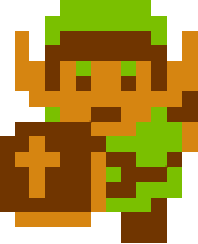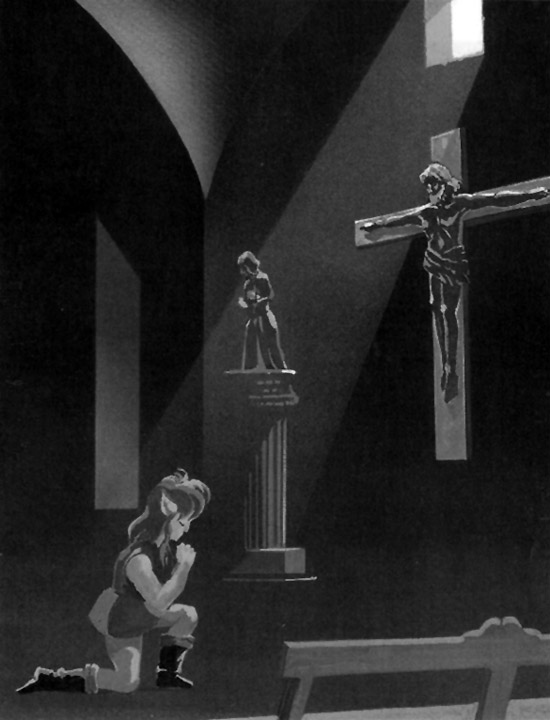How to Handle Christianity in Video Games
.jpg/?width=320&auto=webp&quality=80&disable=upscale)
Image Source: Pinterest.com
Preamble: Necessary Clarifications
While this article emphasizes Christianity, at least many of its principles can apply to handling any religion in video games, and to some extent, other fictional/tribute media such as literature and movies. I chose Christianity as the primary subject of this article because that is the spiritual belief system with which I am most familiar (and the grace of Christ - or Christianity - is what I consider my primarily belief system) and I knew of many examples of Christianity offhand in video games.
I chose to write and publish this article now since I have noticed Christian iconography and themes in video games but have not yet noticed others writing about this topic. May this be useful to you.
If you are commenting on this article or its contents, I urge you to be respectful since this is likely a sensitive topic!
Part I: Considering Prior Depictions
There have been plenty of examples of spiritual and religious beliefs and their practitioners from fictional systems and real world systems portrayed negatively in video games and popular culture in general. Depending on your familiarity level, some may immediately spring to mind. Far Cry 5 is a recent big-budget, major-release example of this 'religion is bad' phenomenon in video gaming (and also rated M for Mature), though, with ample research, you can find many, many other examples of this. Sometimes it manifests as a dangerous cult a la Cthulu. Sometimes instead it's a dangerous theocracy. Sometimes it's religious extremism, often mixed with terrorism, driving the plot a la the Call of Duty: Modern Warfare games and decried here. Sometimes, it's an alien or otherworldly force bent on human domination or destruction a la the Reapers from the original Mass Effect trilogy. Sometimes, it's using a belief system's aesthetic elements without understanding its substance like with the Bayonetta series and Christianity. Regardless, vilifying religion and its practitioners is often done for the emotional impact of corrupting something many people hold dear, and, more subtly, mocking those with strong religious or spiritual beliefs even if such are notably different than the beliefs presented in this game.
Additionally, as a plot device or a framing device, 'religion is bad' is a simple way to get audience attention and sometimes touch on points otherwise difficult to convey. In terms of video games, battling an enemy cult is an easy way for designers to show what that cult and its clerics can do and sometimes how supernatural that belief system truly is.
Still, why emphasize the negative? There's something about human nature that has tended to dwell on the negative. For example, the amount of time spent working and investing to gain a certain amount of money is often much less than the time needed to spend or lose said money. Human nature says of loss aversion that, because something is valuable and gaining it is often a slow or difficult process, losing this valuable or precious thing hurts and is preferably to avoided: The threat of losing something valuable can be twice as impactful as the thrill of gaining something equally valuable.
While some would simply dismiss the 'religion is bad' trope as standard, it need not be. (TVTropes.org has an extensive list of religion tropes.) This phenomenon is more likely due to popular media emphasizing the negative, or, in the words of Jon Stewart during a Daily Show broadcast, "You never hear about the cars that don't blow up." Therefore, where are some positive examples of religion in popular media and why do we audience members tend not to notice them?
The first example is a prominent one from fiction. If you haven't already scrolled down and seen it, check now.
.jpg/?width=646&auto=webp&quality=80&disable=upscale)
Image Source: The Daily Mirror (mirror.co.uk)
This image depicts Luke Skywalker of the Star Wars multimedia franchise and is perhaps the most famous example in recent times of religion (The Force) depicted in a positive way. (I acknowledge that Star Wars talks about the Light Side and the Dark Side of The Force and that The Force is not inherently negative nor positive, but how people use it is based, at least largely, on their training and their personal choices.) Why? A significant and well-discussed point of Star Wars Cinematic Universe (in this case meaning only the official movies and not the TV shows, comics, games, etc.) is that The Force exists and it can be use destructively via the Dark Side or constructively and protectively via the Light Side. Prolonged use of Dark Side abilities is associated with personal corruption, whereas prolonged use of Light Side abilities is associated with personal heroism. In short, the Star Wars Cinematic Universe (SWCU) shows a fuller perspective about what The Force and its practitioners are and can do, and instead of relegating it to an awkward or an undesirable 'otherness' status like many other works of fiction, presents The Force initially in a positive way via the original Star Wars (now often called Episode IV or A New Hope) and its heroic protagonist and Light Side Force User, Luke Skywalker. The SWCU was generally quiet on Jediism being a religion until Rogue One where a character mentions a Force Temple and The Last Jedi where a different character explicitly calls Jediism a "religion." (I am aware of Jediism being treated more explicitly like a religion in other Star Wars media, but for the sake of this argument and for avoiding spoilers, I did not mention more.)
Another major reason for this positive depiction of religion in the SWCU is that religion (The Force), its learning, and its use are not generally seen as burdensome by its users. The Force exists and learning to use it may have some biological disposition (depending on how valid you consider the explanation of midi-chlorians in relation to Force ability), though proper training is expected for a student to be able to harness this ability well. The SWCU treats this somewhat like one of many other professions, such as a pilot or a business owner, though being a Jedi has negatives and positives inherently associated with it. This is similar to real life where being a Christian pastor or minister is often considered one of many honorable professions with its own set of inherent negatives and positives.
George Lucas explicitly mentioned borrowing aspects from various real world belief systems and mythologies when making the Jedi. (Source) For example, if you wanted to find parallels between Christianity and The Force, you could Google the subject and get this list of results, likely including this discussion regarding the accuracy of the comparison between The Force from Star Wars and The Holy Spirit from Christianity.
Overall, the effect of the SWCU positively depicting religion was convincing to me because it drew from a variety of real world sources; it initially depicted main character Luke Skywalker and Jediism positively; and because the SWCU did not attract undue attention on the fact that Jediism was a religion. In short, a positive religious depiction happened in this case in large part due to it being a subtle, well-done piece of a compelling much larger whole.
Part 2: Christianity - Nintendo of America Approved
For awhile, especially in the 1980s and 1990s, Nintendo of America (NOA) actively censored its games. (Source) Religious iconography was one topic of said censorship, though it was inconsistent. Certain famous things on the NES were allowed through this policy due to them predating this censorship, or, possibly, since whoever was in charge of this censoring at NOA happened to like them. (I am aware that there were other games released on other systems by other companies that had different policies on censored material.)
The first - and perhaps most famous - example is the early Legend of Zelda games. For an extensive in-depth look on the subject, Gaijin Goombah's video explains things thoroughly; however, a very brief version follows. The Zelda franchise included Christian crosses in its first two games. Below are some of the depictions from those games.

Image Source: Zeldapedia.com
Zelda 1's main character of Link shows the cross on his small shield. To me, this shield looked like a Bible or other book with a cross on the cover.
.jpg/?width=470&auto=webp&quality=80&disable=upscale)
Image Source: DecalNinja.com
This is a picture of main character Link holding his larger Magic Shield. Notice the cross on the shield's front. (Certain other games of the NES and SNES eras also had crosses on shields, such as the armor shop from Crystalis and the shield icons from Final Fantasy II US and Final Fantasy III US.)

Image Source: WikiHow.com
This is a picture of one of Zelda 1's graveyard screens. Each grave shows a cross. (Many games outside the Zelda series regardless of platform have, however wittingly, used crosses to represent grave sites.)

Image Source: LPArchive.org
Zelda II: The Adventure of Link has a cross as an obtainable item which reveals invisible creatures.
.png/?width=256&auto=webp&quality=80&disable=upscale)
Image Source: Zeldapedia.com
While this above image of Link kneeling before the cross of Christ (more specifically a crucifix) is not from any game, it was from the Japanese guidebook for Link to the Past, heavily implying that Christianity was a very intentional part of the Zelda universe, at least in its first three games. While NOA seemingly never approved of this image, this serves as evidence that NOA was aware of Christianity's place in the Zelda universe.
Another notable example is the



































